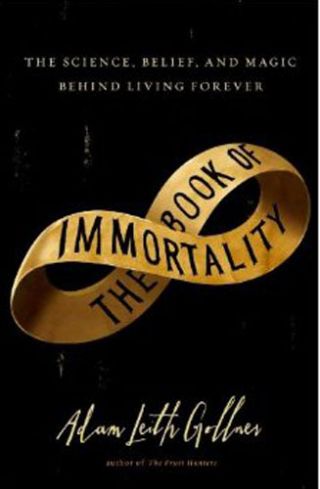Tinkering with Mortality
The quest for eternal life has been with us eternally. But the latest interventions raise questions we’ve never before encountered.
By Gary Drevitch published March 9, 2015 - last reviewed on October 8, 2019
From MIT to Silicon Valley, prominent thinkers are working feverishly to beat aging once and for all, and each has a pressing personal deadline for finding a solution.
For the new breed of anti-aging researchers, the holy grail is not necessarily a longer lifespan but a longer healthspan. The longer we can delay the typical diseases of aging, the greater “compression of morbidity” we’ll achieve, not only forestalling the onset of cancer, heart disease, and dementia, but also lessening how long we’d have to live with them. Bill Gifford, author of Spring Chicken: Stay Young Forever (or Die Trying) rightly argues that no one wants to be like Jonathan Swift’s long-suffering Struldbrugs, cursed by immortality without eternal youth. Far better, he believes, to live until 85 in good health, “and then go out quickly—preferably while riding a motorcycle, or maybe BASE jumping.”

We’ve extended our lives before: American life expectancy rose nearly 30 years from 1900 to 2000, thanks to better public sanitation, advances in neonatal care that drastically reduced infant-mortality rates, and improvements in senior care that extended life for adults with diseases that were once certain death sentences. But those were top-down solutions. Today, our healthspan is largely in our own hands, and that’s a problem.
While we’d all embrace cures for cancer, heart disease, and stroke, University of Chicago professor of public health—and life-extension skeptic—S. Jay Olshansky explains to Gifford, they would only increase average life expectancy by about 10 years, still well short of 100, because most of us wouldn’t make the lifestyle changes to effectively ward off diabetes, Alzheimer’s disease, and other conditions for which our physical and mental fitness are at least partially responsible. Ironically, the reason we wouldn’t may be that most of us feel too young. Surveys conducted by the MetLife Mature Market Institute find that no matter how old people are, they think that “old age” is still 10 or 15 years away. This may be psychologically healthy, but to the extent that it keeps us from taking action to preserve our health, it’s a disaster.
And so, short of a collective increase in willpower, we’ll continue the search for anti-aging magic bullets.
In a California lab, Gifford witnesses a parabiosis experiment, in which old and young mice are opened up and sutured together, allowing the junior rodent’s blood to course through the veins of the senior. The older mice, once conjoined, go on to live four to five months longer than nonrejuvenated contemporaries, an increase comparable to an additional 20 years of life in humans, along with marked improvements in cognition. “Youth is contagious,” he concludes, and while he raises the possibility of a rising vampire class, with Donald Trump and his cronies paying impoverished young people for plasma transfusions, Gifford assures us that researchers are instead working to determine exactly what components of younger blood can be replicated as a potential cure for aging.
A New Breed of “Millennials”
The prospect of such treatments has energized a more radical group of thinkers, including Aubrey de Grey, controversial chief science officer of SENS (Strategies for Engineered Negligible Senescence), who has suggested that, as we engineer aging out of our very cells, some people born today may live 1,000 years. Such claims have drawn intense interest from certain Silicon Valley magnates who have made the war on aging a near obsession.
In 2013, Google invested in Calico, the California Life Company, hoping that its application of “moonshot thinking” to biotechnology could cure aging once and for all. (Google and pharmaceutical giant AbbVie have since pledged up to $1.5 billion to Calico.)
Ray Kurzweil, Google’s director of engineering, is counting on artificial-intelligence advances that will enable the brain to be downloaded to a computer, bringing about effective immortality, especially if and when that consciousness is uploaded into a fresh bio-robotic husk. “The whole idea of a ‘species’ is a biological concept,” he says. “What we are doing is transcending biology.”

This idea is more fully explored in Virtually Human: The Promise—and the Peril—of Digital Immortality, by Martine Rothblatt, Ph.D., a technologist and medical ethicist who, as CEO of biotech firm United Therapeutics, is perhaps the nation’s most prominent transgender executive. Her heady book explores how virtual humanity will extend human life, or at least consciousness, indefinitely.
She proposes nothing less than “liberty from death” via “technoimmortality,” and aims to guide readers through the inevitable transition from “a society of flesh only to a mindcentric society.”
Here’s how it will work: A “mindfile,” a digital database of your life and personality, will be used by an operating system called “mindware” to create a “mindclone” with your unique consciousness. Existing alongside you at first, your mindclone would live on long after your mortal body expires and, when biotechnology catches up, be downloaded into a new shell. Virtual or android, your mindclone will allow you, via true-to-life visual representation, to continue giving guidance and love to your spouse, children, and friends long after you die—after all, your mindclone is you.
Only slightly less mind-blowing than this technology is Rothblatt’s conviction that the many thorny questions raised by the prospect of millions of mindclones living on forever in cyberspace will be easily resolved—once everyone sees the light.
Will biological humans treat mindclones as second-class citizens? “Fleshism” will certainly be a challenge, but every new group entering society faces discrimination. We will surely adapt to “non-flesh conscious beings.” Will we love them? How could we not? They are us. If a lover dies, why not marry his or her mindclone? Rothblatt has “no doubt that love will transcend substrate.”
And yet, while we hope that those we leave behind would cherish more time with us, would they rush to consult our avatar when they have crises, or invite it to their wedding? And if they don’t, would the mindclone feel the pain of rejection? Citing Kurzweil’s thinking, Rothblatt is confident that society will care for any unwanted mindclones who are, after all, conscious and deserving of protection.
A Healthy Fatalism
Rothblatt may be overly optimistic—she insists that creating mindclones is a fundamental reproductive right—but her challenges still merit thought: When we interact with friends on Facebook or Instagram, aren’t we already communicating with a virtual consciousness? We have “friends” online we’ve never met, yet sometimes connect with on a deeper level than we do with our “flesh friends.” And today’s social media are certainly less immersive than they will be decades from now. Why not generate an immortal double who won’t miss out?
Perhaps because, for most of us, this world is enough. In a 2013 Pew Research survey, only 38 percent of adults said they would undergo treatments to extend their lives to 120 or beyond—and while most respondents did hope to live longer than the current average American life expectancy of 79, the median aspirational increase was a relatively modest 10 years.

Adam Leith Gollner, the author of The Book of Immortality: The Science, Belief, and Magic Behind Living Forever, a sweeping, entertaining survey of our most fruitless pursuit, persuasively suggests tapping the brakes: “For now, even if there were a way to extend human life—and there really isn’t—most of us wouldn’t want it,” he writes. “Instead, we’d opt for what inevitably awaits us, that ultimate grace bestowed upon all humans: the chance to die when our time eventually comes.”
Gifford cites research that, while the extension of average lifespans to even 120 would not necessarily sap the planet’s resources, anti-aging breakthroughs that would delay menopause for decades could prove disastrous. If couples could produce offspring into their 90s, 100s, or beyond, it’s easy to extrapolate a world population of 100 billion by 2170. Futurists like de Grey and Rothblatt may put their faith in human ingenuity to figure out problems of food, space, employment, and distraction. But pondering a planet of multicentenarians, Gifford concludes, “I started to think that, as dreadful as aging is, maybe immortality wasn’t such a hot idea, either.”

Jim David/Shutterstock
Submit your response to this story to letters@psychologytoday.com. If you would like us to consider your letter for publication, please include your name, city, and state. Letters may be edited for length and clarity. For more stories like this one, subscribe to Psychology Today, where this piece originally appeared.
LinkedIn Image Credit: Monkey Business Images/Shutterstock
